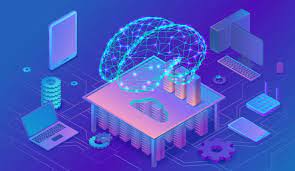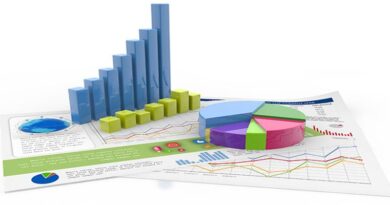The real world: Are AI technologies ready for it?
AI technology is trying to stay up with modern circumstances and be applied in practical situations.
It’s impossible to not be enthralled by AI technologies if you have even the slightest interest in technology. One of the most popular issues in today’s technology world, artificial intelligence, has significantly improved our lives, especially in the previous five years. Many industries have already gotten a piece of the enormous AI pie, whether it is through pushing the boundaries of creativity with its creative powers or understanding our requirements better than we do with its advanced analysis capabilities. Does this imply, however, that artificial intelligence is flawless?
We occasionally neglect to consider the other end of the scale, despite the fact that AI has managed to garner all the attention for what it is capable of. While it is tough for us as humans to interpret life and emotions, AI systems that we feed with data we offer also struggle to do so. Taking into account today’s technology, it is sadly a significant challenge to interpret the unpredictable motions of living things, which base the majority of their decisions on hormonal impulses, and to hope that a computer that never experiences the impacts of these hormones can do it.
Let’s discuss the difficulties we have embracing and utilising artificial intelligence in the most crucial areas of our everyday lives.
How do AI systems learn from the information we provide?
AI systems go through a controlled learning process called as training where they learn from the data we provide. This procedure, which has numerous separate steps, is essential to machine learning, a branch of artificial intelligence.
First and first, data collecting is crucial. A sizable and varied dataset that is pertinent to the particular issue that AI systems are trying to address is needed. This dataset consists of feature-based input data (input data) and labels that match to the desired predictions or classifications. The dataset for image recognition, for instance, might include photos and the labels that go along with them, such as indicating whether an image contains a cat or a dog.
Preprocessing is done to the data after it has been collected. This process makes sure the data is prepared for training. Data cleaning to remove mistakes or inconsistencies, normalisation to bring data into a consistent range, and feature engineering to extract useful information from raw data are some examples of data preparation jobs.
The crucial next step is choosing a model. AI professionals select a machine learning model or algorithm that is compatible with the issue at hand. Common options include decision trees, support vector machines, neural networks (used in deep learning), and others.
The initialization of parameters happens once the model is chosen. These variables are the model’s weights or coefficients, which determine how the model behaves. They start off with arbitrary values.
The model only learns in the training loop. It involves a number of iterative steps:
The model makes predictions in the forward pass using the incoming data and its current parameters.
The discrepancy between these predictions and the actual labels is measured using a loss function. To reduce this loss is the goal.
The model’s parameters are modified using backpropagation and an optimisation approach like gradient descent. This phase makes sure that the model’s forecasts are continually improved.
Multiple epochs of this iterative training process are performed, allowing the model to further fine-tune its parameters.
The stages of validation and testing are essential. While testing more thoroughly tests the model’s performance and generalisation capabilities, validation gauges how effectively the model generalises to fresh, untested data.
Once the model performs satisfactorily, it can be used in real-world applications to automate processes or make predictions based on fresh, never-before-seen data.
There are a number of methods that AI technologies can learn from data, but the most popular method is supervised learning, in which the AI algorithm is trained on labelled data, i.e., the output that is intended is already known. By producing predictions and comparing them to the actual labels, the algorithm learns how to translate inputs into outputs. The system becomes more accurate over time and is able to forecast new data more accurately.
So, even if data labelling is essential to supervised learning, can its accuracy ever be guaranteed? Because, let’s face it, people aren’t flawless, the answer is no. We’ve all experienced occasions when we doubted our own talents, such as when we questioned the accuracy of a medical diagnosis or the fairness of a court decision in a criminal case. We are nevertheless supposed to have complete faith in our judgement and the information we classify. Even with the greatest of intentions, we’re all prone to make mistakes, which is a hard truth to accept.
Unsupervised learning is a different kind of machine learning algorithm. As a result, the algorithm does not have the right output for every data point. This is because the AI system was trained on a set of unlabeled data. It must therefore independently spot trends and connections in the data. Unsupervised learning, for instance, might be used to identify client groups with similar spending patterns.
AI technologies also have the capacity to continuously learn from data. Reinforcement learning is the term for this. The AI system is rewarded for activities that result in favourable outcomes and penalised for actions that result in unfavourable outcomes during this process.
Despite having the appearance of being reasonable, this approach is far from ideal and is not yet fully prepared for the harsh world.
Is predictive AI prepared for a world this is complex?
According to a recent study published in Wired, software programmes like Geolitica and predictive AI technologies are not as useful as one might assume. In actuality, the study discovered that the AI programme was just 0.6% accurate, which isn’t much better than tossing a coin and praying it lands on its side. This raises questions about how police forces all throughout the world are using AI technology.
Geolitica, formerly known as PredPol, was utilised by the New Jersey Police Department to evaluate robbery occurrence rates in regions when there were no police officers on duty between February 25 and December 18, 2018, but it was discovered that it had an accuracy of fewer than 100 out of 23,631 incidents.
Where then was the issue? The fact that predictive AI software is based on the false premise that life is predictable is, in fact, one of its primary flaws. The complexity of life is influenced by a wide range of unforeseen factors. As a result, it might be challenging to trust algorithms to predict where and when an event will take place.
In the sphere of medicine as well, the scenario for AI technology is not yet extremely favourable. ChatGPT is widely utilised and largely regarded as the most powerful large language model (LLM), yet it is very deceptive and unsuitable for proper diagnosis and medical research.



